Abstract
Wild-type strains of Saccharomycopsis lipolytica are able to use lysine as a carbon or a nitrogen source, but not as a unique source for both. Mutants were selected that could not use lysine either as a nitrogen or as a carbon source. Some of them, however, utilized N-6-acetyllysine or 5-aminovaleric acid. Many of the mutants appeared to be blocked in both utilizations, suggesting a unique pathway for lysine degradation (either as a carbon or as a nitrogen source). Genetic characterization of these mutants was achieved by complementation and recombination tests.
Full text
PDF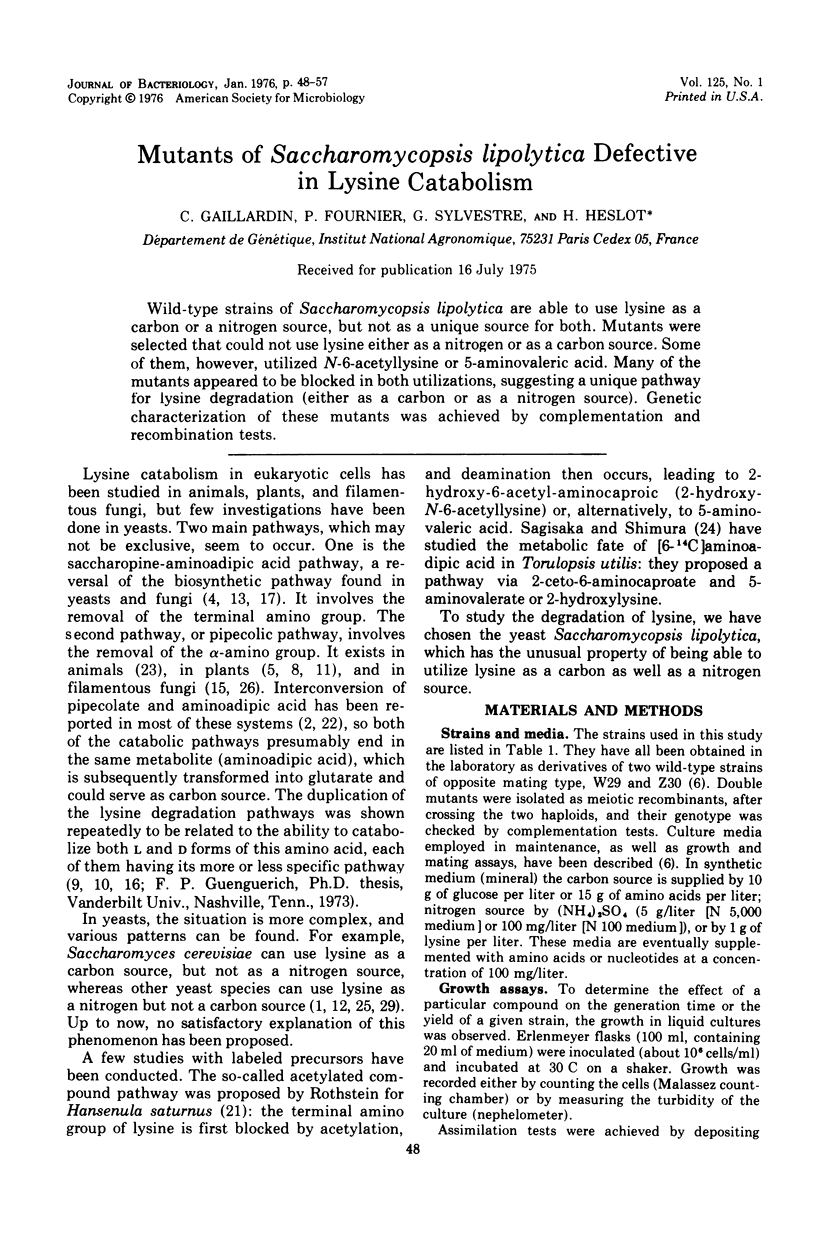

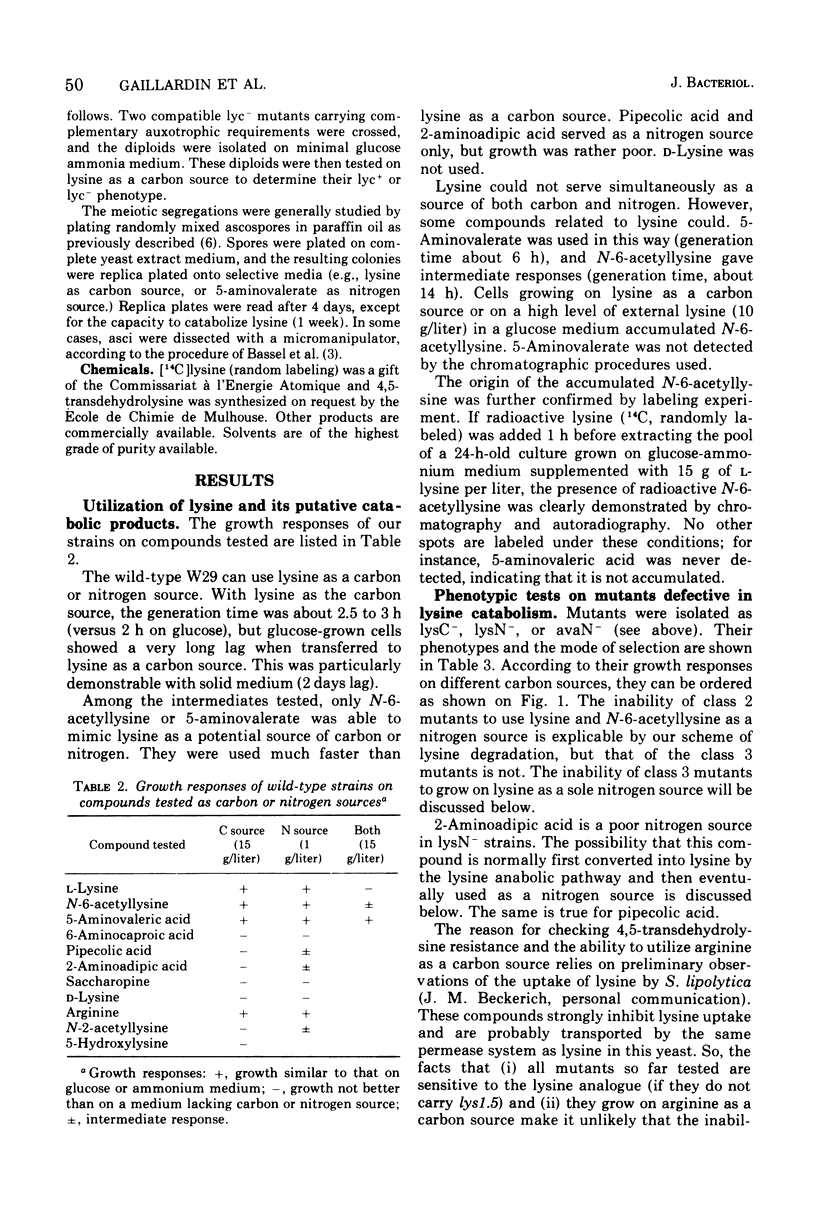
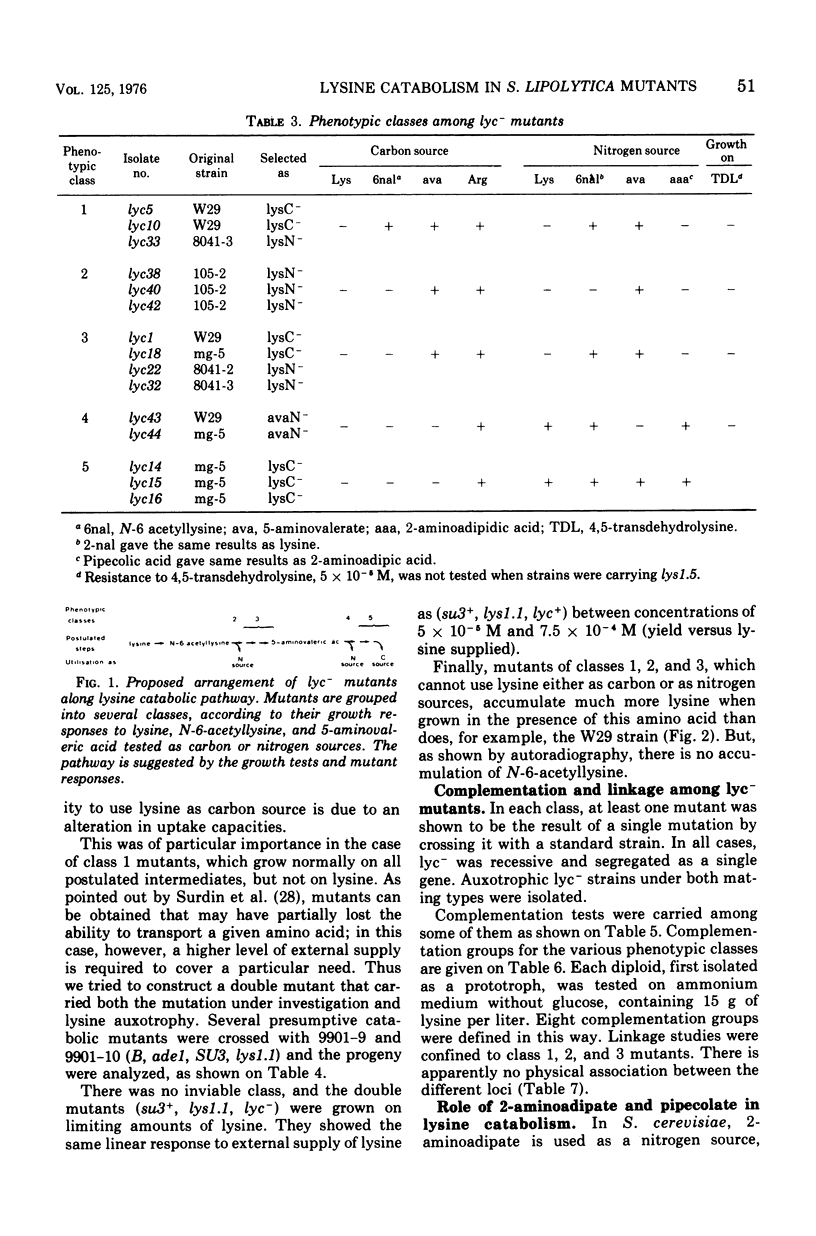
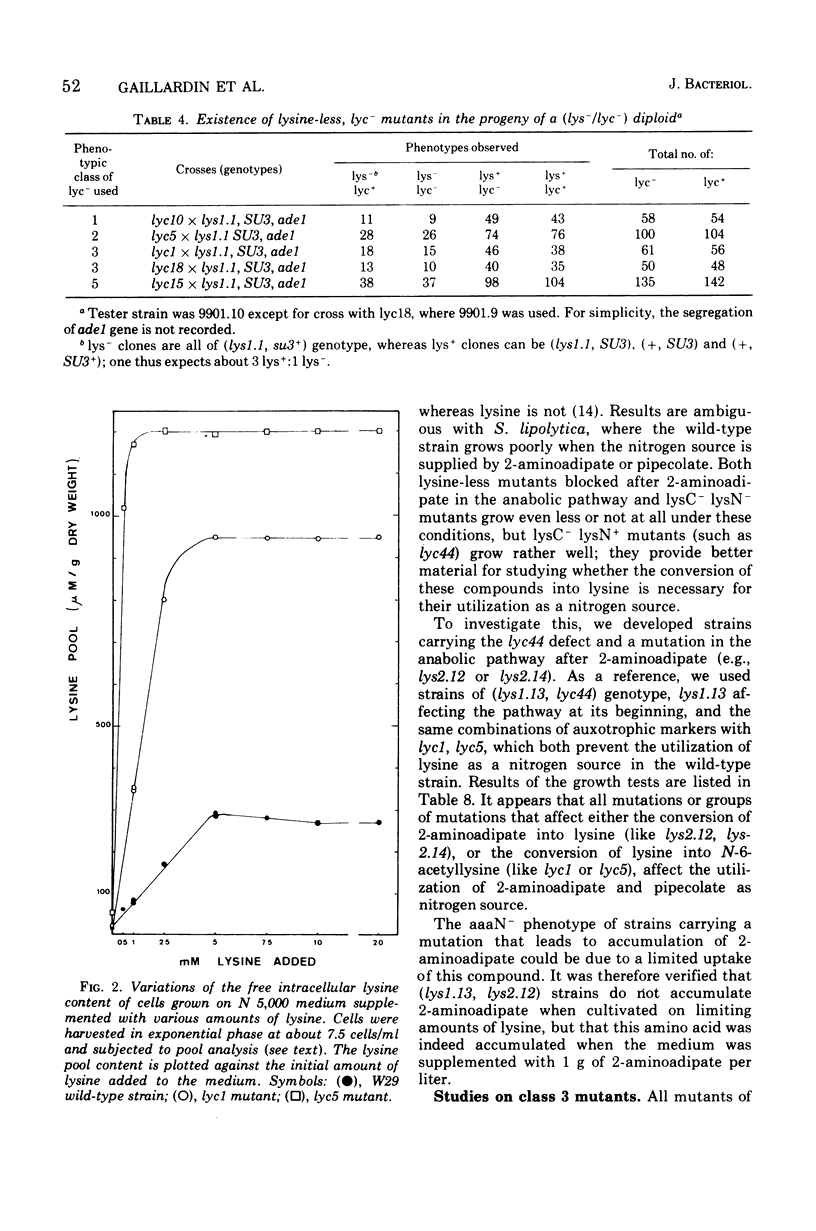


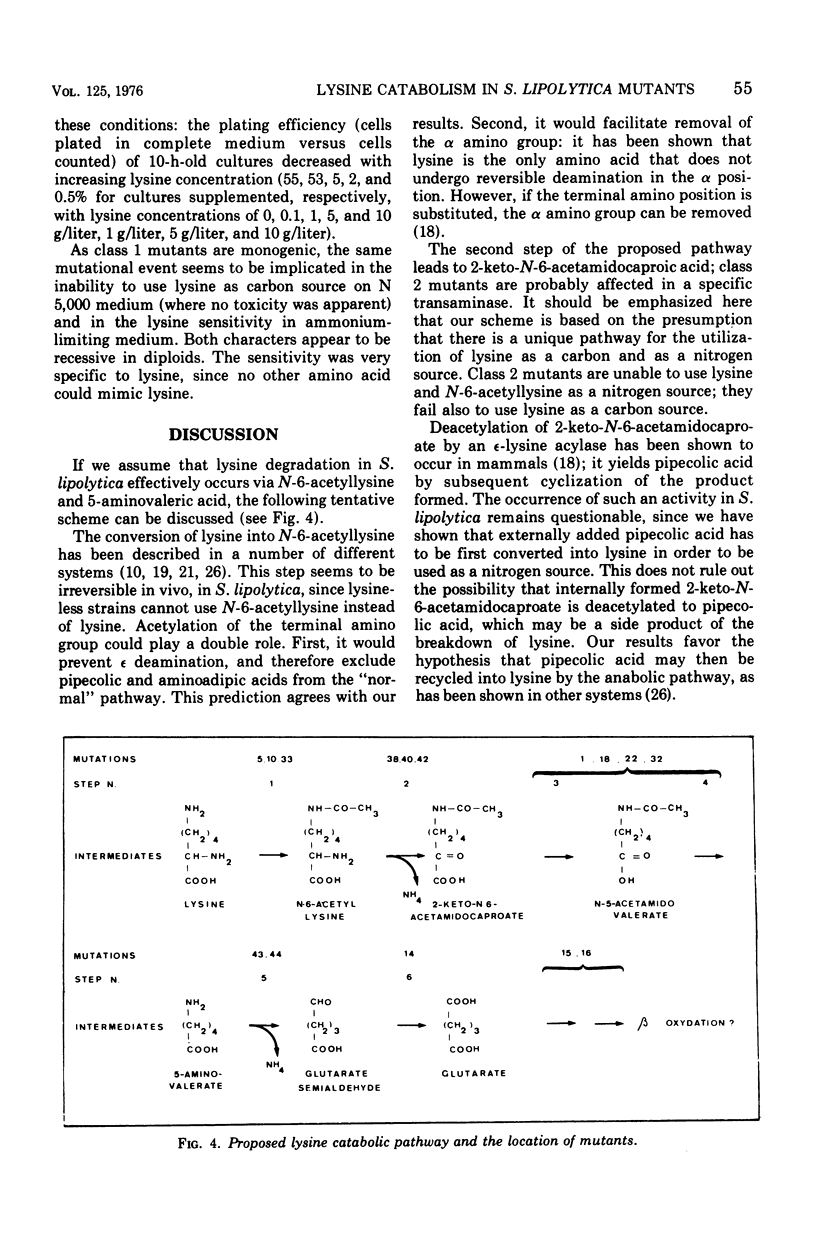
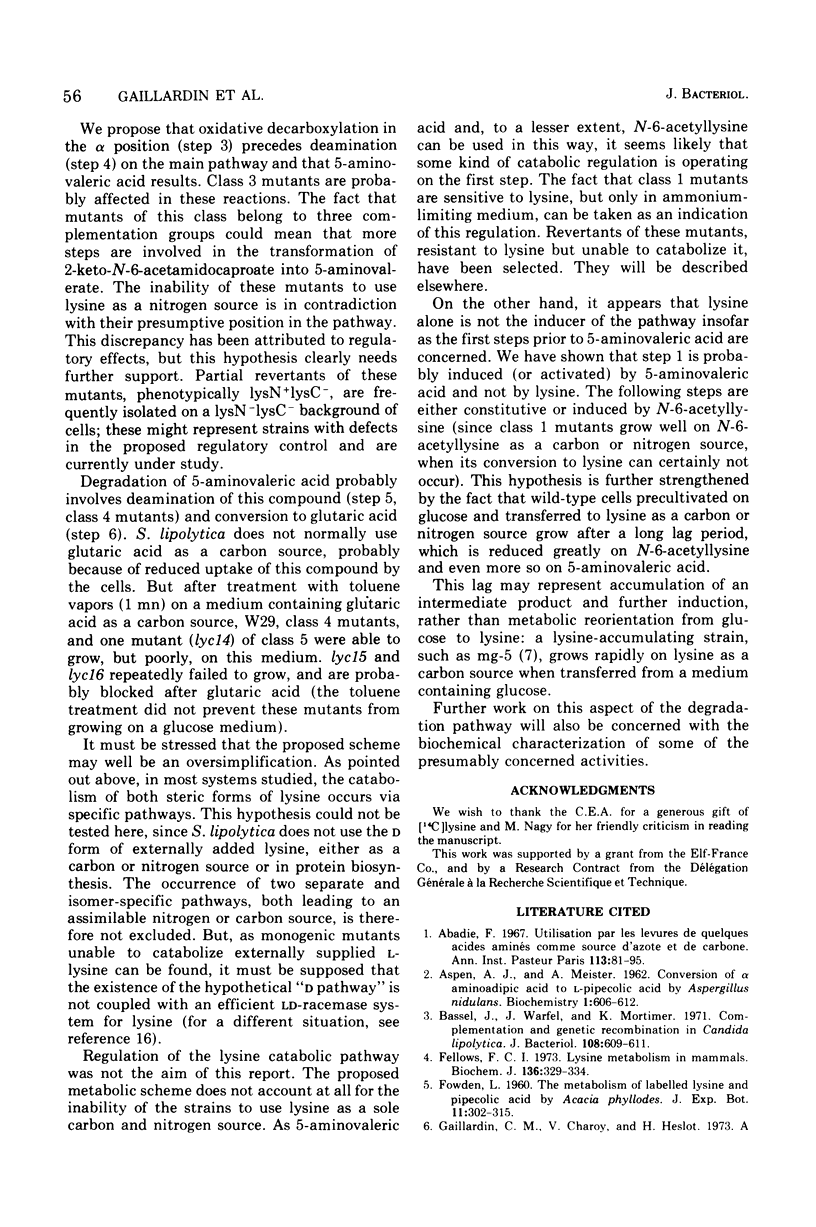
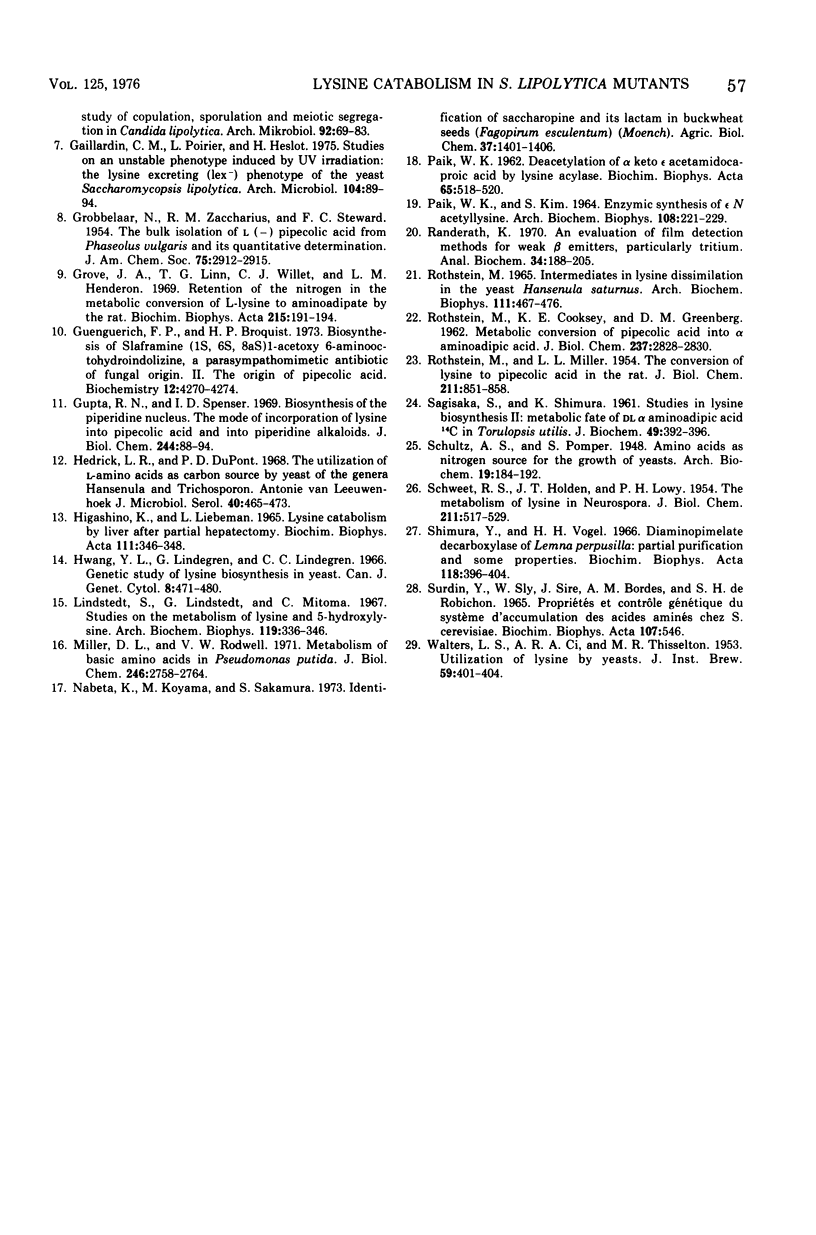
Selected References
These references are in PubMed. This may not be the complete list of references from this article.
- ASPEN A. J., MEISTER A. Conversion of alpha-aminoadipic acid to L-pipecolic acid by Aspergillus nidulans. Biochemistry. 1962 Jul;1:606–612. doi: 10.1021/bi00910a010. [DOI] [PubMed] [Google Scholar]
- Abadie F. Utilisation par les levures de quelques acides aminés comme source d'azote et comme source d'azote et de carbone. Ann Inst Pasteur (Paris) 1967 Jul;113(1):81–95. [PubMed] [Google Scholar]
- Bassel J., Warfel J., Mortimer R. Complementation and genetic recombination in Candida lipolytica. J Bacteriol. 1971 Oct;108(1):609–611. doi: 10.1128/jb.108.1.609-611.1971. [DOI] [PMC free article] [PubMed] [Google Scholar]
- Fellows F. C., Lewis M. H. Lysine metabolism in mammals. Biochem J. 1973 Oct;136(2):329–334. doi: 10.1042/bj1360329. [DOI] [PMC free article] [PubMed] [Google Scholar]
- Gaillardin C. M., Charoy V., Heslot H. A study of copulation, sporulation and meiotic segregation in Candida lipolytica. Arch Mikrobiol. 1973;92(1):69–83. doi: 10.1007/BF00409513. [DOI] [PubMed] [Google Scholar]
- Gaillardin C. M., Sylvestre G., Heslot H. Studies on an unstable phenotype induced by UV irradiation: the lysine excreting (lex(-)) phenotype of the yeast Saccharomycosis lipolytica. Arch Microbiol. 1975 Jun 20;104(1):89–94. doi: 10.1007/BF00447305. [DOI] [PubMed] [Google Scholar]
- Grove J. A., Linn T. G., Willett C. J., Henderson L. M. Retention of the alpha-nitrogen in the metabolic conversion of L-lysine to alpha-aminoadipate by the rat. Biochim Biophys Acta. 1970 Jul 21;215(1):191–194. doi: 10.1016/0304-4165(70)90404-6. [DOI] [PubMed] [Google Scholar]
- Guengerich F. P., Broquist H. P. Biosynthesis of slaframine, (1S,6S,8aS)-1-acetoxy-6-aminooctahydroindolizine, a parasympathomimetic alkaloid of fungal origin. II. The origin of pipecolic acid. Biochemistry. 1973 Oct 9;12(21):4270–4274. doi: 10.1021/bi00745a035. [DOI] [PubMed] [Google Scholar]
- Gupta R. N., Spenser I. D. Biosynthesis of the piperidine nucleus. The mode of incorporation of lysine into pipecolic acid and into piperidine alkaloids. J Biol Chem. 1969 Jan 10;244(1):88–94. [PubMed] [Google Scholar]
- Hedrick L. R., Dupont P. D. The utilization of L-amino acids as carbon source by yeasts of the genera Hansenula and Trichosporon. Antonie Van Leeuwenhoek. 1968;34(4):465–473. doi: 10.1007/BF02046468. [DOI] [PubMed] [Google Scholar]
- Higashino K., Lieberman I. Lysine catabolism by liver after partial hepatectomy. Biochim Biophys Acta. 1965 Nov 15;111(1):346–348. doi: 10.1016/0304-4165(65)90508-8. [DOI] [PubMed] [Google Scholar]
- Lindstedt S., Lindstedt G., Mitoma C. Studies on the metabolism of lysine and 5-hydroxylysine. Arch Biochem Biophys. 1967 Mar;119(1):336–346. doi: 10.1016/0003-9861(67)90462-6. [DOI] [PubMed] [Google Scholar]
- Miller D. L., Rodwell V. W. Metabolism of basic amino acids in Pseudomonas putida. Catabolism of lysine by cyclic and acyclic intermediates. J Biol Chem. 1971 May 10;246(9):2758–2764. [PubMed] [Google Scholar]
- PAIK W. K. Deacetylation of alpha-keto-epsilon-acetamidocaproic acid by epsilon-lysine acylase. Biochim Biophys Acta. 1962 Dec 17;65:518–520. doi: 10.1016/0006-3002(62)90459-6. [DOI] [PubMed] [Google Scholar]
- PAIK W. K., KIM S. ENZYMIC SYNTHESIS OF EPSILON-N-ACETYL-L-LYSINE. Arch Biochem Biophys. 1964 Nov;108:221–229. doi: 10.1016/0003-9861(64)90379-0. [DOI] [PubMed] [Google Scholar]
- ROTHSTEIN M., COOKSEY K. E., GREENBERG D. M. Metabolic conversion of pipecolic acid to alpha-aminoadipic acid. J Biol Chem. 1962 Sep;237:2828–2830. [PubMed] [Google Scholar]
- ROTHSTEIN M., MILLER L. L. The conversion of lysine to pipecolic acid in the rat. J Biol Chem. 1954 Dec;211(2):851–858. [PubMed] [Google Scholar]
- Randerath K. An evaluation of film detection methods for weak beta-emitters, particularly tritium. Anal Biochem. 1970 Mar;34:188–205. doi: 10.1016/0003-2697(70)90100-4. [DOI] [PubMed] [Google Scholar]
- Rothstein M. Intermediates of lysine dissimilation in the yeast, Hansenula saturnus. Arch Biochem Biophys. 1965 Aug;111(2):467–476. doi: 10.1016/0003-9861(65)90210-9. [DOI] [PubMed] [Google Scholar]
- SAGISAKA S., SHIMURA K. Studies in lysine biosynthesis. II. Metabolic fate of DL-alpha-aminoadipic acid-6-C14 in T. utilis. J Biochem. 1961 May;49:392–396. doi: 10.1093/oxfordjournals.jbchem.a127315. [DOI] [PubMed] [Google Scholar]
- SCHWEET R. S., HOLDEN J. T., LOWY P. H. The metabolism of lysine in Neurospora. J Biol Chem. 1954 Dec;211(2):517–529. [PubMed] [Google Scholar]
- Shimura Y., Vogel H. J. Diaminopimelate decarboxylase of Lemna perpusilla: partial purification and some properties. Biochim Biophys Acta. 1966 May 5;118(2):396–404. doi: 10.1016/s0926-6593(66)80048-6. [DOI] [PubMed] [Google Scholar]
- Surdin Y., Sly W., Sire J., Bordes A. M., Robichon-Szulmajster H. Propriétés et contrôle génétique du système d'accumulation des acides aminés chez Saccharomyces cerevisiae. Biochim Biophys Acta. 1965 Oct 18;107(3):546–566. [PubMed] [Google Scholar]


